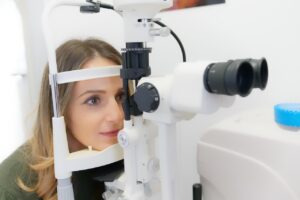Most people don’t think about their vision—until something seems off. Macular degeneration, one of the leading causes of vision loss, starts quietly. No pain, no sudden blindness, just subtle changes that can be easy to ignore. But catching it early can make a world of difference. Let’s talk about the early warning signs and what you can do if you notice them.
The Sneaky Symptoms You Shouldn’t Ignore
Macular degeneration doesn’t usually announce itself with flashing lights or dramatic changes. Instead, it creeps in gradually. One of the earliest signs? Straight lines that start to look wavy or distorted. If a doorframe or the edge of a table suddenly seems bent, your macula might be struggling.
Another red flag is trouble seeing in low light. You might find it harder to adjust when moving from a bright room to a dimly lit one. Small print that used to be easy to read may now seem blurry or require extra effort to focus on.
You could also notice a shadowy or blurry spot smack in the center of your vision. At first, it might just be annoying—like a smudge on your glasses you can’t wipe away—but over time, that central blur can grow.
Colors might start to look dull or less vibrant, and faces could become harder to recognize. If someone you know walks up to you, and their features seem fuzzier than usual, it’s time to take note.
Who’s Most at Risk?
Macular degeneration mostly affects people over 50, so if you’re in that age group, regular eye exams are crucial. Genetics also play a role—if a parent or sibling has it, your chances of developing it are higher. Smoking, high blood pressure, obesity, and excessive sun exposure without UV protection can also increase your risk.
What to Do if You Notice Symptoms
First things first: don’t panic. Blurry vision doesn’t always mean macular degeneration, but it’s important to get checked out. Book an appointment with an eye doctor as soon as possible. They’ll likely run a few tests, including a simple grid test called the Amsler grid. If the lines on that grid look wavy or missing, it’s a strong clue that something’s up.
If you do get a diagnosis, the good news is that there are ways to slow the progression. Lifestyle changes like eating more leafy greens, quitting smoking, and protecting your eyes from UV rays can help. For some, special vitamin supplements (like the AREDS2 formula) may be recommended to support eye health. If you have the more aggressive wet form of macular degeneration, treatments like eye injections can help manage it.
Don’t Wait—Be Proactive
Eye health often takes a backseat to other medical concerns, but it shouldn’t. If something seems off with your vision, trust your instincts and get it checked out. Catching macular degeneration early can help you take steps to protect your sight for as long as possible. So, if those straight lines start looking wavy or faces seem fuzzier than they used to, don’t just chalk it up to getting older—your eyes might be telling you something important.







